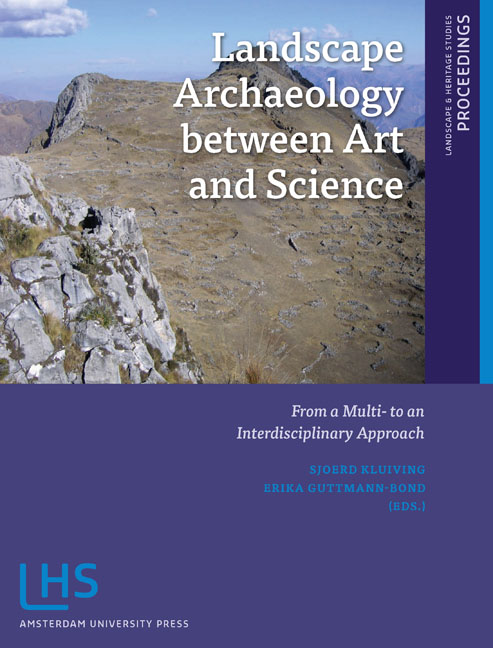Book contents
- Frontmatter
- Contents
- Preface
- Introduction: LAC2010: First International Landscape Archaeology Conference
- THEME 1 HOW DID LANDSCAPE CHANGE?
- THEME II IMPROVING TEMPORAL, CHRONOLOGICAL AND TRANSFORMATIONAL FRAMEWORKS
- THEME III LINKING LANDSCAPES OF LOWLANDS TO MOUNTAINOUS AREAS
- THEME IV APPLYING CONCEPTS OF SCALE
- THEME V NEW DIRECTIONS IN DIGITAL PROSPECTION AND MODELLING TECHNIQUES
- THEME VI HOW WILL LANDSCAPE ARCHAEOLOGY DEVELOP IN THE FUTURE?
- Miscellaneous Endmatter
1.4 - Cultural forces in the creation of landscapes of south-eastern Rhodope: Evolution of the Byzantine monastic landscape
Published online by Cambridge University Press: 21 January 2021
- Frontmatter
- Contents
- Preface
- Introduction: LAC2010: First International Landscape Archaeology Conference
- THEME 1 HOW DID LANDSCAPE CHANGE?
- THEME II IMPROVING TEMPORAL, CHRONOLOGICAL AND TRANSFORMATIONAL FRAMEWORKS
- THEME III LINKING LANDSCAPES OF LOWLANDS TO MOUNTAINOUS AREAS
- THEME IV APPLYING CONCEPTS OF SCALE
- THEME V NEW DIRECTIONS IN DIGITAL PROSPECTION AND MODELLING TECHNIQUES
- THEME VI HOW WILL LANDSCAPE ARCHAEOLOGY DEVELOP IN THE FUTURE?
- Miscellaneous Endmatter
Summary
ABSTRACT
Cultural landscapes constitute the cultural, social, ecological and economical heritage of the local population. The mountainous area of South-eastern Rhodope, from the Byzantine times till the 1970s, includes a complicated palimpsest characterised by multiplicity and density of natural and cultural elements. The purpose of this paper is the research, identification and evaluation of the cultural landscape of the area of Mt Papikion in south-eastern Rhodope. Information and data were collected and analysed. The consecutive producers of landscape, with different cultural identities, acted within a historical and ecological outline. The monks and later the Pomaks (part of the Muslim minority in Greece as recognised by the Lausanne Treaty in 1923) preserved the basic landscape's structures, while adapting them to their cultural reality. The ruins located in the area indicate the existence of a renowned centre of Byzantine monasticism which is mentioned in the ancient sources from as early as the 11th century.
Since the 1970s, new stakeholders and social changes have had their impact on the landscape, and modern methods of landscape management have replaced the traditional practices. Although it is recognised that traditional knowledge can contribute to sustainable resource use in general (Schmink et al. 1992), modern management rarely takes it into account. Due to extensive afforestations and to the loss of traditional practices of woodland management, the landscape has become more homogenised. Historical, demographic, social, natural and economic changes affect the evolution of the landscape, so it should be mapped, registered and evaluated before its complete disappearance. The cultural landscape of the area is a significant source of knowledge of the traditional environmental know-how.
KEYWORDS
cultural landscape, Byzantium, monasticism, Pomaks
INTRODUCTION
The region of the Papikion Mountain in Rhodope has a variety of traditional landscapes. It was first inhabited by hermits and the communal monastic system was introduced later. During the 11th century AD monks began developing a monastic centre, adopting techniques to shape the landscape according to their needs. After the 13th century, monasteries began to decline, mostly due to fires. During post-Byzantine times, Papikion was no longer considered to be a monastic centre. However, close to the ruins of the monasteries the Islamised residents of the uplands of Rhodope, the Pomaks, built small settlements in order to exploit the arable land around them.
- Type
- Chapter
- Information
- Landscape Archaeology between Art and ScienceFrom a Multi- to an Interdisciplinary Approach, pp. 71 - 80Publisher: Amsterdam University PressPrint publication year: 2012

